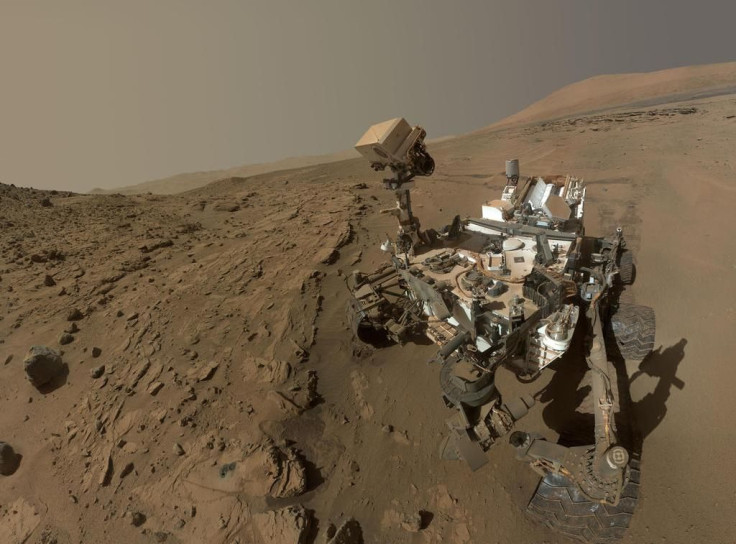Martian Soil Could Hold Liquid Salty Water Under Certain Conditions

NASA’s Curiosity rover has measured weather and soil conditions on Mars to discover that the red planet’s surface has favorable conditions to hold liquid salty water underneath. The latest findings have further fueled the long-running debate on whether Mars ever contained water and was suitable to host life.
Scientists had previously discovered that Martian soil contains “perchlorate,” a type of salt that can absorb water vapor from the atmosphere and lower the freezing temperature of water. Curiosity’s latest discovery, published as a study in the journal Nature Geosciences on Monday, has helped scientists suggest that during some cold nights, conditions are favorable for small quantities of brine to form in the Martian soil, only to dry out again after sunrise.
“Liquid water is a requirement for life as we know it, and a target for Mars exploration missions,” Javier Martin-Torres of the Spanish Research Council and the study’s lead author, said in a statement. “Conditions near the surface of present-day Mars are hardly favorable for microbial life as we know it, but the possibility for liquid brines on Mars has wider implications for habitability and geological water-related processes.”
As part of the study, scientists examined the planet's temperature and humidity levels for more than a full Mars year and found that conditions for liquid brine to form could be even more favorable at higher latitudes, where colder temperatures and more water vapor can result in relatively higher humidity.
“Gale Crater is one of the least likely places on Mars to have conditions for brines to form, compared to sites at higher latitudes or with more shading,” Alfred McEwen of the University of Arizona, Tucson, and the study’s co-author, said in the statement. “So if brines can exist there, that strengthens the case they could form and persist even longer at many other locations,” he said.
© Copyright IBTimes 2024. All rights reserved.






















